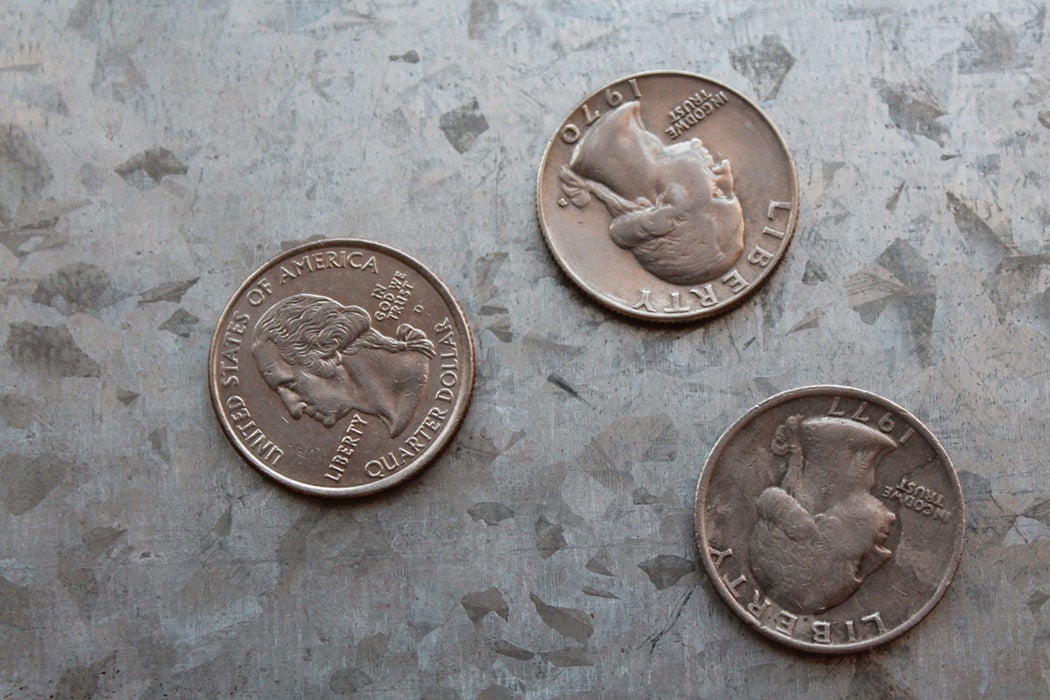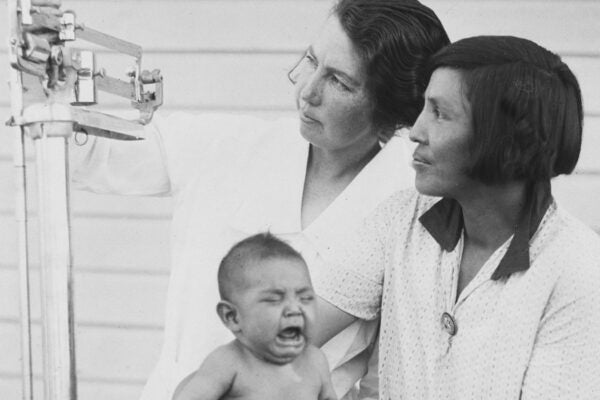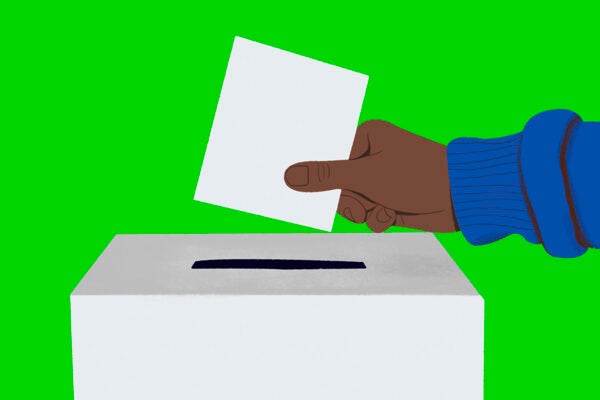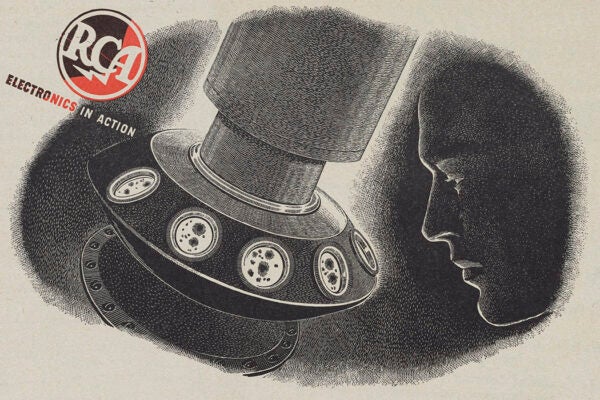Heads. Heads. Heads. Heads. Heads. Heads. Heads. Heads. Heads. Heads. Heads, again.
Tom Stoppard’s classic play Rosencrantz and Guildenstern Are Dead opens with two Elizabethan players, some well-stocked prop moneybags, and the flip of a coin that lands as heads. Again. And again. And again.
In Stoppard’s scene, the bit actors Rosencrantz and Guildenstern kill time during a production of Shakespeare’s Hamlet by betting on coin tosses. Guildenstern flips a florin and Rosencrantz predicts that it will land as heads. It does. Guildenstern spins another coin and it lands as heads again. After Rosencrantz has successfully bet heads 77 times in a row, Guildenstern proclaims that, “A weaker man might be moved to re-examine his faith, if in nothing else at least in the law of probability.” He ends up flipping heads 92 times in a row. Forsooth, what are the odds?
The likelihood of Rosencrantz and Guildenstern’s scenario actually happening is 1 in 5 octillion, a probability so small that it is practically impossible to imagine. According to NOAA’s website, it is more likely that a person in the United States will be struck by lightning four times in one year than repeat the results of Guildenstern’s coin tossing. The 92 heads in a row is, however, more likely to happen than randomly shuffling a deck of cards and discovering that they appear sorted.
More interesting than sussing out precise odds, however, are the premises of the scene. What makes it so absurd? What do we “know” about the probable outcome of tossing a coin that lets us “get” Stoppard’s joke? We know that the odds of a coin toss ought to be a 50/50, split between heads and tails, so surely there must be something wrong with the universe—something unfair?—for Rosencrantz and Guildenstern’s scenario to play out.
The Mystique of the Biased Coin
The toss of the coin functions as cultural shorthand. A flipped coin is assumed to be an unbiased way to pick between two possible outcomes, since both parties involved in the toss have an equal chance of winning.
So long as the coin is a fair coin, that is. A fair coin is one where either side of the disk has an equal chance of turning up, according to the probabilities worked out by the seventeenth-century Swiss mathematician Jakob Bernoulli. It means that one side can’t be favored, whether it’s inadvertent (say, the manufacture of the coin adds weight to one side, favoring a flip to one side over the other) or intentional (a two-headed coin). When an unfair coin is tossed, it conveys an unfair manipulation of the world to shift the odds in someone’s favor.
In other words, Guildenstern and other flippers of coins have a profound faith that odds of a coin toss are split 50/50, between heads and tails. Part of what makes Stoppard’s scene so compelling is that it plays to the audience’s skepticism that someone could win 92 tosses in a row by betting heads. Sure, Rosencrantz and Guildenstern’s epic coin tossing demonstrates that such a thing is possible, we tell ourselves—it’s just not very probable.
A Short History of Coin Flips
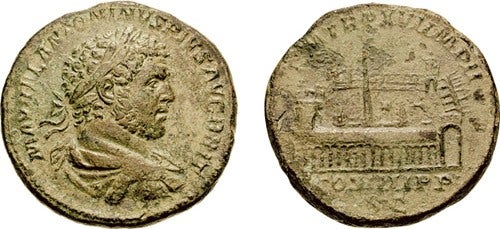
Tossing a coin to decide an outcome is nothing new. Since the Roman Empire and throughout the Middle Ages of Europe, a coin toss has offered a way to decide between two alternatives. Known as “heads or ships,” in reference to the images that appeared on the Roman sestertii, the coin toss was a children’s game of chance as well as a gambling game among the patrician elite. Legend has it that Julius Caesar would settle legal disputes with a coin toss.
A medieval variant called “cross and pile” was a favored game for children (and even young apprentices) during the Middle Ages. In the late thirteenth-century, King Edward II’s own exchequer records the royal losses of “cross and pile” when the king played against domestic servants.
In more recent eras, the coin became linked to probability, statistics, and mathematical modeling. In the eighteenth century, for example, famed mathematician and naturalist Georges-Louis Leclerc, count de Buffon, tossed a coin 4,040 times, which resulted in 2,048 heads, or very close to half the throws. (The relative frequency was ~.5069.) In the early twentieth century, the English mathematician Karl Pearson tossed a coin 24,000 times, with 12,012 of the throws coming up heads. (The relative frequency of Pearson’s experiment was ~.5005, even closer to the 50/50 odds we associate with a fair coin. Following such demonstrations, the coin became, in essence, the smallest random number generator available.
For modern sporting events, the toss of a coin offers the winning team some advantage—say, to bat first or to choose a side without the sun in one’s eyes. In February 2016, the Iowa Democratic caucuses were so close that a dozen delegates were awarded to either Bernie Sanders or Hillary Clinton based on a coin toss. That wasn’t anything new, either. As Russell Berman reported for the Atlantic, “The coin flips are a longstanding feature of the Democratic caucuses, and games of chance actually have a long history in deciding close electoral contests in the U.S.”
A coin is the only object that statistically models probability without the complexity of a game or other conditional circumstances. Unlike the spin of a roulette wheel or a throw of dice, a coin is the simplest model for determining any kind of probability, evenly split. Moreover, it is an object so familiar that one does not need an understanding of a game’s rules—for example, how roulette is played—to be able to understand what the toss implies. The coin is our simplest material connection to randomness.
The Culture of Coin Tosses
But it’s really the moral implications imposed on the coin toss that imbue it with its cultural cachet. Culture has taken the coin toss as an impartial way to select between two possible outcomes. It implies fairness—there isn’t anything that coin tossers can do (besides cheat) to favor one outcome. No agency appears to intervene in the decision, and thus the human actors committed to it can comfortably distance themselves from the result.
Indeed, in popular culture, the coin toss has become a way to shed moral responsibility for an outcome. In the 1939 film Mr. Smith Goes to Washington, for example, Governor Hopper is asked to choose between two candidates, Mr. Hill and Mr. Miller. Unable to pick one to his own satisfaction, he flips a coin that lands on its side. He chooses to interpret this as fate telling him to pick neither candidate and selects Mr. Smith instead.
In the world of DC Comics, Batman’s archnemesis, Harvey Dent, is secretly the supervillain Two-Face, who uses the flip of a two-headed coin (with one face scratched up) to determine whether some action that he’s going to take is “fair,” subverting the audience’s notions of the fairness of a coin toss. Likewise, the BBC’s The Musketeers offers audiences an episode in which the arch-villain decides whether hostages live or die based on a coin flip. We see the same in No Country for Old Men when Anton Chigurh uses the toss of a coin as a proxy of free will: He forces a West Texas gas station attendant to flip a coin for his life, to live or die based on whether the coin comes up heads or tails.
What Hangs in the Balance
As the first scene of Rosencrantz and Guildenstern draws to a close, the actors begin to muse about the implications of 92 heads in a row. Guildenstern observes that they’ve been spinning coins together “since I don’t know when” and, in all that time, neither he nor Rosencrantz were ever more than a couple of gold pieces up or down. The “unsurprisingness” of the outcome is what Guildenstern argues to be “a law, or rather a tendency, or let us say a probability, or at any rate a mathematically calculable chance, which ensures that he will not upset himself by losing too much nor upset his opponent by winning too often.” Guildenstern is arguing for the apparent order of the world—ultimately moral as much as mathematical. No one will win or lose “too much.”
This is why 92 consecutive throws of heads gives Guildenstern pause. It has made him question his very understanding of the world. If a coin toss might be biased, or at least represent unfair odds, what would that mean for the customs associated with it? Is nature no longer predictable and fair?
Weekly Newsletter
By extension, if Rosencrantz and Guildenstern had used their coin flipping for outsourced decision-making—in the manner of Anton Chigurh, Harvey Dent, or Governor Hopper—it would rankle our intuitive sensibilities. The “fate decides” attitude that we allow with one toss becomes problematic when we’re confronted with a result that offers a serious challenge to Buffon and Pearson.
The coin toss, thus, offers a cultural object that is fundamentally imbued with notions of fairness and fate. Although the coin flip itself is ruled by pure chance, we construct the circumstances that “heads” or “tails” is arbitrating. Ultimately, the coin toss is less about fate and more about the situations that we construct around it.
